Dr. K’s Weekly Roundup, September 5, 2025 Edition
“Traditionis Custodes” as latent schism; Bishop Michael Martin Luther and Cupich; the SSPX option; “litniks” bite the dust; hints of racism in Vatican II; how to fight back against AI; dancing
This week there’s a lot to cover, so we’ll dive right in.
Liturgical Lessons
The invalidity of Traditionis Custodes
A pithy and potent article by an Italian author identifies the latent schismatic attitude contained in the last pope’s infamous motu proprio: “Lex Orandi and Ecclesial Rupture: A Brief Theological and Canonical Critique of Article 1 of Traditionis Custodes.”
Allow me a slight rant.
One of the worst things about Francis’s pontificate was that it reversed, or at least interrupted, a natural healthy process of the Church’s immune system.
Thanks to years of better scholarship and a gradual thawing towards the traditional Roman Rite, culminating in Summorum Pontificum, it had become normal for clergy and intellectuals to admit candidly and calmly that something had gone grossly wrong with the liturgical reform and that at least part of the solution was going to be a peaceful acceptance of the return of the old rite to our altars. The sense of relief at finally being able to admit that the Novus Ordo was badly done and that we had to reconnect with tradition was well-nigh universal among serious Catholics—prior, that is, to Traditionis Custodes.
Then along came Francis with his nuclear bomb, and suddenly, it became fashionable again, perhaps self-serving for some and for others an expression of ill-formed “obedience to authority,” to start mounting new defenses of the Novus Ordo and new attacks on the Roman Rite.
We had not seen attempts at making a serious defense of the NOM for years, and then, voila!, Cavadini, Healy, and Weinandy entered the fray, then Catholic Answers apologists, now Dr. Brant Pitre; daily, the list grows longer of “conservatives” who seem to have all but forgotten the widely-shared critiques of the reform (I refer to critiques from the likes of Ratzinger, Cañizares, Ranjith, Burke, and Sarah) and who regurgitate the stale talking points of the 1970s as if they were brand new.
There’s no way any of this would have started up again without Traditionis Custodes. No way.
In following church fads and fashions for several decades, I’ve never seen anything quite so absurd as this amnesic turnaround, this walking back of decades of painful progress, this enthusiastic rehashing of long-refuted bromides. This renewed multi-front defense of the reformed liturgy is, frankly, embarrassing and pathetic, given how much has changed between the 1960s and today.
If I didn’t have a sanguine temperament, I’d be downright depressed by it.
In any case, the battle goes on, and the weapons of truth are as bright and biting as ever. More Catholics than ever know from experience the difference between the Roman Rite and the Modern Rite; a mountain of scholarship on the flaws of the reform and the perfections of the tradition is available. There’s no turning back.
But until certain generations die, progress on the ground will be in fits and starts, with advances and retreats.
The destroyer continues his rampage
According to Rorate Caeli:
We have received a report of the new liturgical directives which Bishop Michael Martin of Charlotte wishes to impose on the masses of Paul VI celebrated in the three Catholic high schools under his jurisdiction. The goal is apparently the decatholicization of the new liturgy in the schools under his authority.
Unfortunately, but not surprisingly, they are exactly what we would expect, given what we have previously seen of his ideas about “liturgical norms.”
The use of kneelers and communion rails for the distribution of Holy Communion is forbidden.
There must be students to serve as extraordinary ministers of Holy Communion.
A projector and screen are to be installed in the chapels to facilitate the singing of hymns and longer parts of the Mass such as the Gloria and the Creed. (It is, of course, a major pastoral problem that young people today spend too much time reading from books, and not enough time interacting with screens.)
At large Masses, a student is to give a testimonial about their faith life, lasting 3-5 minutes, between the final prayer and the blessing and dismissal.
We might be tempted to say that Bishop Martin has learned nothing from the international backlash that resulted when his would-be liturgical norms, full of absurdities and illegalities, were leaked, but this would be unfair. He has learned not to put such things in writing, and to communicate them only by word of mouth.
Practically overnight, Charlotte went from being one of the most desirable places to be a traditional Catholic to one of the least. Incredible. May those who can homeschool, homeschool; may those who can get to the TLM, keep going to it (whether diocesan or SSPX); and may those who can move, consider moving.
The Society of St. Pius X
Given that one of two locations in the Charlotte diocese where people can still attend the TLM after October 1 will be the SSPX chapel in Mount Holly, some readers might be wondering what I think about attending such a chapel.
The Charlotte Latin Mass Community has done a fine job explaining why attending Mass at an SSPX chapel fulfills the Sunday obligation. I wrote about this topic six years ago, and since then my view has relaxed still further, as you can read at this Substack:
Yes, I still prefer to attend Masses with the Ecclesia Dei institutes, but if I were living in a place where the SSPX were much more convenient to attend, or even the only game in town, I would go without hesitation.
The reason behind my position is that the liturgy is indeed the first priority, and so I will give it first priority; but it is not the only good to be taken into consideration. Thus, given two equidistant chapels that offer the TLM, one of them in manifest visible communion with the local ordinary and the other not, I will go to the former. At the same time, this manifest visible communion does not justify or excuse liturgical rupture and abuse, and that is why I will not have anything to do with the Novus Ordo, for reasons explained here:
The Sunday Mass Obligation in a Time of Liturgical Crisis (Part 3): Should the Novus Ordo Be Avoided as a Matter of Principle?
This is the third in a four-part series. The others: Part 1 | Part 2 | Part 4.
And, even more pointedly:
The Reign of Novelty and the Sins of the Times: Why the Novus Ordo Is Solely Modern in Content (Part 4 - Conclusion)
In the last part, we refuted the notion that the Novus Ordo is “more ancient” or that it resembles early Christian liturgies; on the contrary, its (1) con…
While we’re on the topic of the SSPX, I’d simply like to add links to two articles that came out last week concerning the future of the Society:
Charles Bradshaw, “To Hand on What Has Been Received? The Mission and Challenges of the SSPX in Our Times”
Kennedy Hall, “The SSPX Goes to Rome”
More disordered concupichscence
The brilliant light of Chicago, Blase Cupich, who is undoubtedly chummy with Bishop Michael Martin Luther, has just published a short piece on his archdiocesan blog that parrots exactly the talking points of the... 1970s. How bold and daring are these standardbearers of our times! They know a thing or two about backwardism. Here’s a taste of Cupich’s column, entitled “Tradition vs. traditionalism”:
The [liturgical] reform was a recovery of truths of the faith, which over time were obscured by a series of adaptations and influences that reflected the church’s expanding relationship with secular power and society.
Particularly prominent during the Carolingian (seventh to ninth centuries) and baroque (17th to 18th centuries) periods, many adaptations were inserted in the liturgy that incorporated elements from imperial and royal courts, transforming the liturgy’s aesthetics and meaning. The liturgy then became more of a spectacle rather than the active participation of all the baptized in the saving action of Christ crucified.
One could easily read the bishops’ Constitution on the Sacred Liturgy, Sacrosanctum Concilium, as a correction of these Carolingian and baroque liturgical adaptations through a restoration of the liturgy’s original emphasis on active participation by the laity and a noble simplicity. These reforms were a direct response to the centuries of development that erroneously had transformed the Mass from a communal event into a more clerical, complex and dramatic spectacle.
What is at stake in accepting the liturgical reforms of the council, then, is our very understanding of what it means to be a church of tradition.
At this point, I violently ejected my coffee.
If that blog had a comments section, and if that hypothetical section had had a free speech policy, I would have shared a link to the lecture from 2022 in which I blast this entire line of argumentation out of the water:
Or, if you prefer to read the full text of the lecture, you may find it here: “Enter His Courts With Praise: Liturgical Reverence for Christ the King.”
One suspects Cardinal Cupich and Bishop Martin would be right at home with the following “performance” of “the official theme song of the Implementation of the Synod on Synodality in the Philippines,” courtesy of seminarians of the Immaculate Heart of Mary Seminary, Tagbilaran City:
Sadly, no translation has been offered of a theme song that must surely be a theological and devotional treasure.
Flagship litnik journal to cease publication
My good friend John Pepino coined the term “litnik” (think “beatnik”) to describe the “true believers” of the late and radical Liturgical Movement that gave us the Novus Ordo.
In the United States, one of the key purveyors of this bilge was the journal Worship, founded innocently enough in 1926 at St. John’s Abbey in Collegeville under the name Orate, Fratres by monks who still prayed traditionally and still believed the Catholic Faith. Well, the publisher has just announced that in 2026 the journal will cease publication after a last flurry of issues in which they celebrate their funeral.
In a marvelous post called “Signs of the Times,” the inimitable Gregory DiPippo writes:
When it was founded, the journal was called Orate, Fratres, and the majority of the issues published under that name can be found on archive.org (as noted by the ever-diligent Matthew Hazell.) But in 1951 the name was changed to Worship, i.e. from Latin to the vernacular, “as an indication of its stalwart support for the growing interest in the use of the vernacular in liturgical celebrations that would enable participation by the whole body of believers.” (Quoted from the website.) Of course, you already knew that the professional liturgist’s contempt for the faithful, which regards them as too stupid to participate in worship in a sacred language, is not a post-Conciliar phenomenon.
Another part of the journal’s website states, “It would not be an exaggeration to view the liturgical renewal of the Second Vatican Council as a vindication of Worship.” And this sums up the tenor of the journal as a whole, which insists on treating the calamitous failure of the post-Conciliar liturgical reform as an amazingly successful renewal. (In this, of course, it is hardly alone.) St John’s Abbey will not close its doors anytime soon, as it still has over 100 monks, but it is perhaps worth noting, at least in passing, that before the great renewal of the liturgy began, it had over four times as many. (The diocese within which it is located, St Cloud, is fairly typical for an American diocese in having about half as many priests as it did in 1966, half as many male religious, and less than one-fifth as many women religious.)
Nothing specific is said about why exactly the journal is ending publication, but its website says that it is done with “a sense of both fulfillment and regret,” language more than a little reminiscent of that used by dying religious congregations when they announce that they are no longer accepting new members, and are making plans to quietly disappear into homes for the elderly.
Let me offer a clue to the extent to which the folks at St. John’s, Collegeville, are still “true believers,” i.e., ideologues who will not allow evidence to get in the way of their positions and who would rather go down in flames than reverse their course — e.g., by renaming the journal Orate, Fratres and then inviting conservative and traditional points of view.
In 1990, The Liturgical Press published the English translation of Annibale Bugnini’s 1,000-page tome The Reform of the Liturgy 1948-1975, the most important book ever written on its topic, in which the Vincentian patiently details every step of the reform, and how he was involved from start to finish—as time went on, the “architect” of it (as Yves Chiron calls him). He is a passionate and thorough apologist for the radical transmogrification of Catholic worship.
This book has long been out of print, in spite of its unique and indispensable place in scholarship. Dealers are asking between $175 and $800 for copies (just check out AbeBooks or Ebay).
Collegeville could make several tons of cash if they reprinted this volume for a new generation of scholars.
But they won’t; and why?
Because however much they fawn over the reform, they must know that this book is DAMNING to the eyes of regular Joes. It tells TOO MUCH. It shows how the sausage was made in the factory. It shows that the entire Catholic world was placed at the mercy of a narrow-minded engineer with an enormously inflated opinion of his own grand ideas.
No, we can’t have THIS kind of resource readily available to a new generation that already tends to be skeptical about official narratives, if not already knee-deep in rediscovering tradition.
No blessings, please, and thank you Protestants!
Have you ever heard the claim that the postconciliar Book of Blessings doesn’t bless? Sadly, it’s all too true, as Fr. Z explains in an excellent article, drawing on the research of Matthew Hazell.
Moreover, Fr. Z and Hazell go after people who are trying to argue that Protestants had nothing to do with the composition of the new rite. While the extent of their participation was less than some trads assume, it was real, and, beyond that, there is NO DOUBT at all that one of the main motivations for the new rite was rapprochement with Protestants. In his recently published memoir, Boniface Luykx, a front-row member of the Consilium, relates that Paul VI approved the new rite primarily for this reason.
What happens to someone who “goes over…”
Laura Phelps’ “A TLM Girl in a Novus Ordo World”—talk about a poignant article! I could so well relate to everything this lady describes: pretty much every traditional Catholic has experienced the same or similar feelings of loss and gain:
The Traditional Latin Mass is both an ocean of refreshment and a school of humility. It has opened my eyes wider than I thought possible. Everything is elevated: my posture of prayer, how I confess my sins, and the way I examine my conscience before receiving the Eucharist. I’ve been introduced to forgotten customs like Ember days, Septuagesima, and my favorite, the Rorate Mass, in honor of the Blessed Virgin Mary. Every time I learn an old custom or ancient prayer, I marvel at the depth and richness of our faith, thinking to myself, “This is what I have been searching for my whole life.” Like the parable of the merchant seeking good pearls, I have truly found the pearl of great price—and the parable doesn’t lie–it is costly. I’m a TLM girl living in a Novus Ordo world, and it hasn’t been easy.
The cost of discipleship is never higher than when you leave the mainstream and go after that pearl of great price.
Was the Sarum Rite ever on the table?
Liam Warner at Liturgical Arts Journal speaks of “The Alleged Attempt to Restore the Sarum Use”:
Now and again one hears at a cocktail party that when Pope Pius IX restored the English diocesan hierarchy in 1850, the bishops seriously considered adopting the missal and breviary of Sarum, which had been those used in England before the Reformation. In fact they adopted the Roman, but the story provides a tantalizing what-if, especially to people interested in traditional liturgy today. The claim seems to be that there was a definite proposal made to the bishops and others in authority, not simply a vague suggestion or idle wish on the part of antiquarians. The difficulty is that no one has ever been able to prove that this happened.
Lots of interesting information in this well-researched piece about 19th and early 20th-century English liturgical revivalism.
Of course, our position here at Tradition & Sanity is that the Sarum Use, like all the other traditional Western rites and uses, should be recovered and used again today. Happily, that seems to be under way, quietly, here and there.
Pre-55 in poetry
John Medlin has written an eloquent poetic tribute to a lady he knew in the SSPX chapel he attends in the UK. Here's my favorite passage, on the pre-55:
One Sunday after Mass, knowing I lacked
A Missal, turning to a window ledge
Where books much-used but surplus now were stacked,
Selecting one she said, “Take this,” and thrust
A time-torn Missal in my hand. I gabbled
My thanks, retiring to inspect this prize
In a nearby café where, intrigued, I dabbled
Its dowdy pages, puzzling that there seemed
“Discrepancies” compared to the “Sixty-Two” –
The Missal used for all the chapel’s rites.
Well, frequent use, both home and in the pew,
Revealed the reason: Mrs Horton’s gift
Was of a 1940s Missal, thus
Complete with Great Week rites not yet “reformed”
And Calendar not yet “improved” – that fuss
For civil servants’ “tidiness” which broke
A generation’s faith, and as a gibe
Produced, at last, Pope Paul’s amoebic Mass,
Committee-made by men half-clown, half-scribe.
What depths of doctrine, nodes of pious truths,
What praisings’ vaults are held in that “old” book
Which sanctified worldwide the Church’s worship
Prior the Council’s folly, and with a look
Can crush the new rite’s tickbox childishness.
Speaking of which… The time has come for serious conversation about (and implementation of) the pre-1955 Roman Rite. Not as something eccentric, marginal, quixotic, but as the normative baseline for the sane “reset” of liturgical praxis so necessary after a century of wild experimentation. This is why the new book Lumen Christi: Defending the Use of the Pre-1955 Roman Rite was written.
More and more resources are emerging to assist in the recovery of the old Holy Week. A splendid series has just begun at New Liturgical Movement that focuses on practicalities of the pre-55 Holy Week. Not to be missed by TLM celebrants, MCs, scholas, and anyone interested in the recovery of the Roman heritage. Part 1 is here; I’ll post parts 2 and 3 as they come out.
Does “Gaudium et Spes” espouse racism?
A thought-provoking article at GUMISIRIZA’s Substack explores how stereotypes of African natives have shaped Western discourse for centuries, into the last Council:
Gaudium et Spes is a narrative of anthropology built on evolution, about modern man— the product of evolution from a ‘rather static concept of reality to a more dynamic, evolutionary one,’ which evolution is more visible in nations that ‘enjoy the comforts of science and technology’ or ‘economic and scientific progress.’...
Now as we can see, the évolué was basically someone who developed not just a different identity altogether but a different character and personality that was everything other than African. This necessarily means that the Eurocentric document Gaudium et Spes is a racist charter in all probability, couched in words hitherto not well appreciated by African bishops. It did not have to deny the involvement of God in a creative act. It just had to state in paragraph 33 that man with his ‘native excellence’ has procured for himself goods previously sought from the heavenly powers using scientific technology. In other words, he has evolved from the original theological state through the metaphysic to the scientific as Auguste Comte earlier put it.
Those who have not reached this level are said by Kant, Levy-Bruhl and Hegel to be maladjusted, incapable of rational inquiry. These three all pointed to Africa. Maurice M. Makumbi expertly discusses their attitude on Africans, and there are stark comparisons in their thought about Africans with Gaudium et Spes. These claimed to reject a ‘magical view’ of the world, and ‘superstitions that still circulate’— wording that is found in Gaudium et Spes.
Hegel in particular concealed his hatred of religion behind the mask of hatred for ‘magic’ and ‘sorcery.’ He said that Africans have no history and most certainly no future: as Africa was, so it would remain. Colonialists probably acting on this impulse inherited from Hegel, vowed not to let this happen. They would colonize the continent and subjugate its people, so as to bring about technological civilization. Thus it has been said that unlike Locke’s [sic] Cogito ergo sum (I think therefore I am), the colonialists had the mentality of ‘I think therefore I rule’ (Cogito ergo regno).
But I would go a step further and suggest that what is attributed here to Africans—a “magical view of the world”—is characteristic of premodern man in general, and of the Catholic sacramental and iconic vision of reality, which came under attack from rationalism, with its tendency toward reductionism. Hence, Sebastian Morello’s concept of sacramental magic was attacked by people who seem to have a reductionist notion of sacraments as spiritual exchanges based on contracts. I have a lot more to say on this topic, but not at this moment.
Thoughts on AI: a post-human future?
This past week I’ve read an unusually large number of articles about AI. It seems everyone is trying to wrap their minds around the significance of it, the implications of it. Should it be welcomed and employed? Should it be feared, avoided, execrated?
The best of the articles I read was by Jeffrey Bilbro at Plough, “What Problem Does ChatGPT Solve?”
Perhaps formulating queries will be the last task left to the prompt engineers laboring in the decadent dotage of humanity. If this comes to pass, I would mourn the narrowed range of human responsibility, but at least this task of forming questions would preserve some essential work for those attenuated humans. For asking questions is work. As I hope my students come to realize, there is indeed such a thing as a dumb question, and learning to ask the right questions may be the most valuable fruit of a good education. Many essays on ChatGPT pose various questions to the software, but I want to pose one to the engineers developing these Large Language Models (LLMs) and to the enthusiastic adopters of this technology: What is the problem for which LLMs are the solution?
If it’s that we’re curious to read a Shakespearean sonnet about climate change, then it seems we’re investing a lot of time and energy into a pretty frivolous endeavor — though I’m as interested as the next person is to listen in on a conversation between Elon Musk and Wendell Berry. If it’s that we want to save the time we waste writing emails and memos and assessments, then I’m not sure accelerating the production of pointless text solves the problem of its abundance. And if it’s that we are drowning in a sea of too much data and need a computer to sort through it all and distill the particular information we need, then I don’t see how pumping out unreliable — but confidently asserted — answers improves our information ecosystem. My fear is that the problem in search of a solution is the human effort required to learn and communicate truth. Unfortunately, this is not, in fact, a problem.
When we struggle to put the right words in the right order in an effort to articulate some splinter of truth, we exercise our human intelligence and creativity and become more capable of being responsible and redemptive agents. Such a struggle may not be pleasant. It may often be tedious. But without this struggle we cannot learn and grow, and to the extent that we are invited to outsource the effort of sense-making, our intellectual and creative abilities will atrophy and our relationships will suffer.
The whole essay is superb. To me, it seems obvious, indeed past obvious, that “our intellectual and creative abilities will atrophy and our relationships will suffer” to the extent that we outsource our cognitive work to machines. It will not, pace some enthusiasts, free us up to use our minds in “higher ways.” Rather, it will cause our intellectual muscles (so to speak) to wither, so that when we try to lift our minds to the higher, we will have no ability to do so.
This was the wisdom of the medieval focus on the trivium and quadrivium: by small and simple paths we approach the grand gates of metaphysics and, beyond that, theology. If we offload arithmetic, geometry, music, astronomy, grammar, logic, and rhetoric to our mechanical dynamos, we will not find ourselves transplanted to a garden of creativity and contemplation; instead, we will find ourselves chained down more than ever to immediate sensation, material needs, and the boredom of a disenchanted world.
In “David Jones: The Vatic Poet and the Liturgy of the Ages,” Brian Moore offers us a dense but deeply rewarding meditation (as always!):
Some folks warn that they [AI bots] are conduits for malevolent spiritual beings and others deplore the lack of conscience in a machine, or from the side of audience, the susceptibility of deracinated, atomized individuals bereft of community and tradition to the ersatz, ever cheapened, easy, transactional interactions facilitated by a technocracy that acts the sorcerer’s apprentice.
What is lost is attentive humility where the complexity and nuances of slowness, actions seeped in memory and requiring modes of ascesis that strip away the chatter of the city of man open up spaces and times where silence and revelations may occur. Reverence and joy are replaced with consumerism and debased pleasure that invites spoliation, boredom, and often enough, rage, violence, and contempt for others.
Tradition, broadly construed, is a mode of inquiry. It is generational, synthesizing, sifting the experiences of human beings over time, these lives that yearn for eternity, and seem too brief; you can never get very far plumbing the depths of mysteries that wonder asserts not as proposition, but existential encounter.
Rod Dreher pointed to a powerful article by Ted Gioia called “Our Shared Reality Is About to Self-Destruct,” with the summary: “Stalin once erased people from photographs. Today, AI can erase truth itself. Society may not survive what comes next.” Excerpts:
In the last few months, reality has been defeated—totally, completely, unquestionably. It is now possible to alter every kind of historical record—perhaps irrevocably. The technology for creating fake audio, video, and text has improved enormously in only the last few months. We will soon reach—or may have already reached—a tipping point at which it’s impossible to tell the difference between truth and deception.
For example: Can I tell the difference between a fake AI video and a real video? A few months ago, I would have said yes. Now I’m not so sure. Can I tell the difference between fake AI music and human music? I still think I can discern a difference in complex genres, but this is a lot more difficult than it was only a few months ago. Can I tell the difference between a fake AI book and a real book by a human author? I’m fairly confident I can do this for a book on a subject I know well, but if I’m operating outside my core expertise, I might fail.
At the current rate of technological advancement, all reliable ways of validating truth will soon be gone. My best guess is that we have another 12 months to enjoy some degree of confidence in our shared sense of reality. But what happens when it’s gone? ...
The problems among sane, healthy people may be even worse than among the psychically fragile. These stable individuals are essential to the smooth running of society—but they will no longer have the shared basis of reality we once took for granted. They will have their own beliefs, and their own experiences—but others may now refuse to acknowledge them. That’s because all evidence is tainted. In a world with pervasive deception, everything demands skepticism.
Consider those who believe that the moon landing never happened. Now imagine a world in which everybody is like that about everything—because nothing can be proven.
He says priority needs to be given to REALITIES, to THINGS (as Byung-Chul Han would say) that cannot be wholly digitalized or artificially changed, such as physical books, which say what they say and are what they are (provided you have reasonable grounds to believe that a real person wrote them; this would not be a problem with anything published in the past several thousand years until 2019, when the first LLM-authored book was released—a dreary title on lithium-ion batteries).
To this I would add, even if it seems obvious (is anything obvious anymore?),
immersion in the natural world—ranging from backpacking in the wilderness to going for a walk in the park;
immersion in traditional worship, which is premodern, antimodern, and postmodern;
the use of fine arts and practical arts, e.g., cooking, carpentry, poetry, music—enjoying it live, in person, and practicing it oneself;
and, most of all, in-person fellowship.
A voice of sanity on dancing
Dorothy Cummings McLean, who, as you might recall, joined forces with me here at Tradition & Sanity to defend the goodness of social dancing in our times, keeps a wonderful blog called Mrs McLean’s Waltzing Party. There she just published a fine reflection called “Dancing for Joy”:
Are there dangers inherent in dance? Yes, of course: there are dangers inherent in every social activity. Any group of men and women coming together merely to chat risks committing slander or quarrelling, for example. And, of course, there has been a sad decline in mainstream dancing that mirrors the free-fall of social mores. (This involves not just the sexual revolution but the gender rebellion now, too.) A formal dance that aims at celebrating and strengthening a Catholic community is not just a world away from raunchy clubs, it is on a different plane.
Various saints, pastors and moralists have looked at moral evils in their local communities and prescribed remedies. Before the First World War, shepherds of souls worried about sins taking place during or (especially) after dances, particularly public, unregulated ones, at which there was unchecked drinking, no chaperones, handy nearby bushes, immodest evening dresses, or even just young men walking young women home. Just prior to World War I, there were also in fashion a number of ungainly, hugging, “animal” dances, which were condemned not just by pastors but by the internationally renowned dance teachers Vernon and Irene Castle.
The Great War changed the world, of course. Now, 107 years later, Christian moralists have a vast new minestrone of sins to combat. Many flow from the internet. I don’t mean just the pornography and bad ideas absorbed from the web, material that slides under reason to take our emotions prisoner, but also the planned addictiveness of so-called “social” media. Restless, glued to our phones, human beings are becoming lonelier and less comfortable with our greatest earthly joys: other human beings. How sad to think that even Christians, freed by Christ, have been enslaved by solitary sins of many kinds with this new technology.
We need a remedy for that, and my home remedy is traditional Catholic social dancing.
Amen to that! I can’t think of anything less like ChatGPT than dancing the Virginia Reel or the Viennese waltz or the Ländler or a swing (to big-band music, please, not to rock ‘n’ roll).
Political Musings
King Charles III visits the Oratory
I know that His Majesty is not, shall we say, very orthodox in his Christianity, but one can only rejoice that he was given an opportunity on September 3 to visit the Birmingham Oratory, where he toured Newman’s rooms and heard about his life.
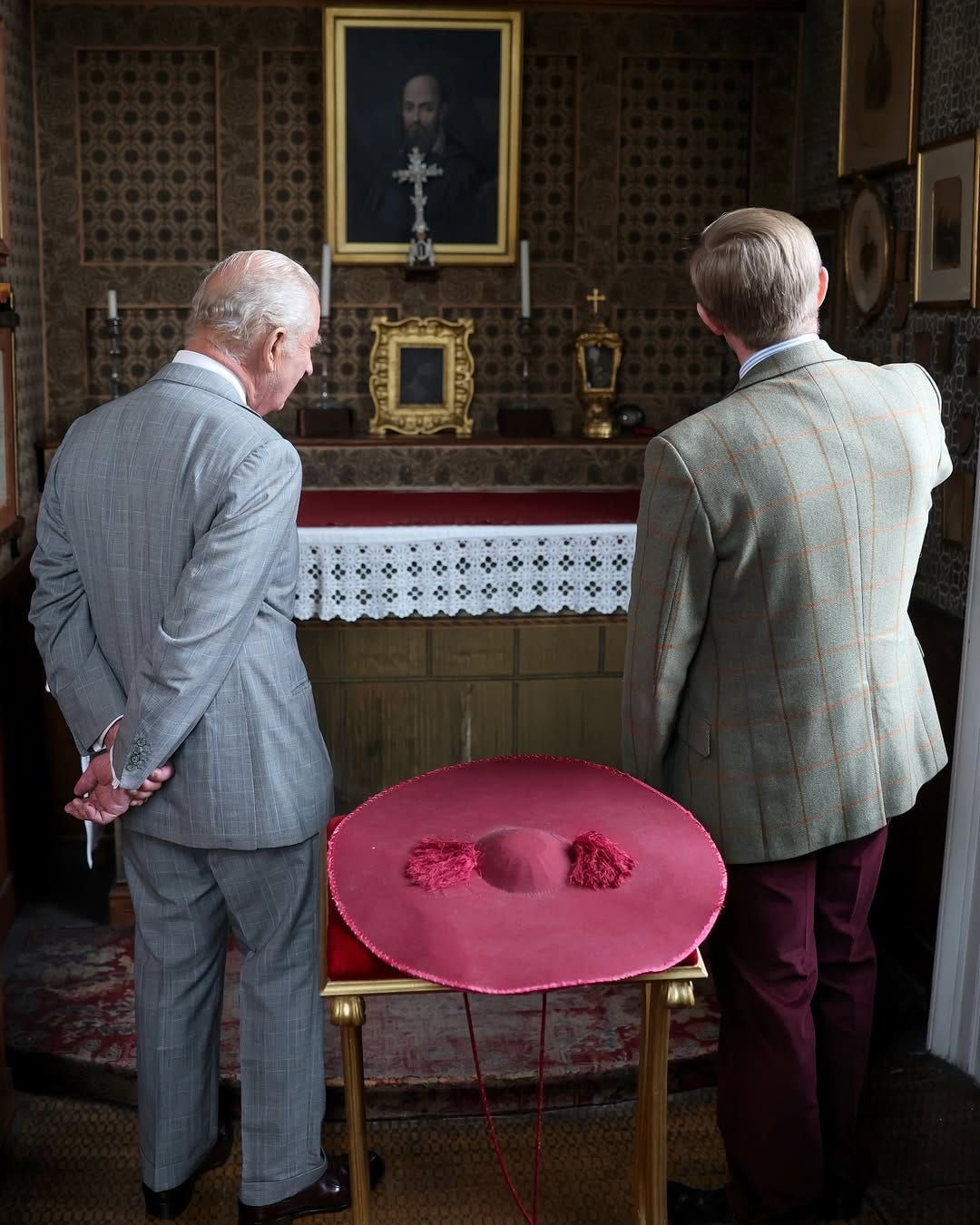
But that’s not all he heard about. As reported by Edward Pentin:
The monarch took a keen interest in the large number of faithful who attend the liturgies there and their diversity of backgrounds, as well as that most of them are attracted to the traditional Latin Mass. “Over a thousand people come to Mass here at the weekend,” Father Harrison said. “The best attended is the traditional Latin Mass, and what is most interesting is that it’s the most diverse Mass, ethnically speaking, during the whole weekend.”
Oh, for the days when we had Catholic kings and emperors who could, as it were, act as checks and balances for wayward popes and bishops. Ever since Christendom fell apart, the hierarchical function has become hypertrophied, having no counterweight in the lay dominion.
The Two Swords
Robert Keim in “The Two Swords of Medieval Politics”:
Setting aside the controversy of papal vs. monarchical power, we can focus, by way of conclusion, on the deeper meaning of the doctrine of the Two Swords. By insisting that the world be governed by two complementary forms of authority, one spiritual and one material, medieval society affirmed, on a civilizational scale, that human beings are a union of body and soul and human society is a union of earthly coexistence and heavenly destiny.
Furthermore, the presence of the spiritual sword affects mankind directly, through ecclesiastical life, but also indirectly, by reminding temporal rulers that they too must respect the immaterial and eternal dimensions of man’s existence. This is one of the keys to understanding the beneficence, in some cases the exceptional excellence, of medieval monarchy. Though monarchical governance is subject to abuse in ways that modern electoral democracy is not, medieval monarchs were obliged to govern in union with a parallel kingdom whose principal concerns were not wealth, conquest, power, and worldly glory but grace, virtue, holiness, and eternal salvation. My study of history indicates that this system, though imperfect like all others, was remarkably successful. »
Keim gives us some wonderful descriptions of the heavy-handed tactics of Gregory VII—a great pope, yes, but also one who was sometimes resisted and sometimes ignored. As most popes will be, for better or for worse.
The patchwork quilt of old Europe
Aaron Pattee asks: “What Happened to the Imperial Territories?”
We hear of kingdoms, duchies, archdioceses, imperial abbeys, imperial cities, etc. What were these and where are they now? This post introduces a new series exploring the former imperial lands.
Ah, the beauty of this complicated map of organic political entities, unlike the monolithic nation-states that replaced it, later to be replaced by a monolithic federation:
Robert Keim in “Modern Perspectives on the Problems of Democracy”:
As you probably have noticed by now, modern society exhibits various features that I’m not particularly enthusiastic about. In many cases, though, these features don’t really surprise me, insofar as they follow logically from the disordered tendencies of human nature in its fallen state. Unruly appetites, imbalanced emotions, darkened intellects, hubristic ambitions, weakened bodies—these things have been throwing wrenches into human civilization for an awfully long time. The historically unprecedented tribulations of modernity are the result of, first, inheriting the wreckage of the past while abandoning its wisdom, and, second, creating cultural and technological conditions that are for our disordered tendencies what strong winds, high temperatures, underfunded fire departments, and ammunition depots are for a burning city.
Worthy of note
Edward Pentin, “Cardinals Burke and Sarah Back Global Push for First Saturday Devotion at 100 Years”: “Cardinals Raymond Burke and Robert Sarah are among senior prelates urging greater participation in the First Saturday Devotion and are backing an initiative that originated in France, aimed at encouraging the faithful to take part. The Marian devotion, which is centered on making reparation for offenses and blasphemies against Mary’s Immaculate Heart that include denying her perpetual virginity or the Immaculate Conception, promises two immense graces for those who participate with true devotion and repentance: Our Lady’s assistance at the hour of death with all the graces necessary for salvation, and peace on earth. The 100th anniversary of the devotion is Dec. 10.”
Marcel De Corte’s “Very Topical Considerations on the Life, Character and Thought of Saint Pius X,” a witty and savage critique of the state of theology in 1964, in light of that pope’s teaching on Modernism.
Fr. Paul Scalia in 2016: “There’s also [involved in transgender ideology] demonic hatred of the body. C.S. Lewis’s Screwtape Letters chronicles the demonic resentment of God’s favoring us ‘hairless bipeds…begotten in bed.’ Why this hatred? Perhaps because the human body and soul are one. The soul, having so much in common with the angelic nature, is one with the body, having so much in common with animal nature. The devil takes this union as a personal offense. He (as we all experience) seeks to undo it—to divide us from our own flesh, to pit body and soul against each other. He masterfully leads us to worship the body one moment and abhor it the next. Death—the separation of body and soul—was, of course, his greatest victory.” Quoted in an excellent article at Crisis Magazine by Fr. Nick Ward, “Transgenderism and the Ruin of Souls.”
A concluding photo and thought:
Gloria Patri et Filio et Spiritui Sancto: sicut erat in principio, et nunc, et semper, et in saecula saeculorum. Amen.
The traditional Mass will never cease to be offered until the end of time when Christ, in the manifest glory of His Divinity, does away with all signs.
Thank you for reading, and may God bless you.



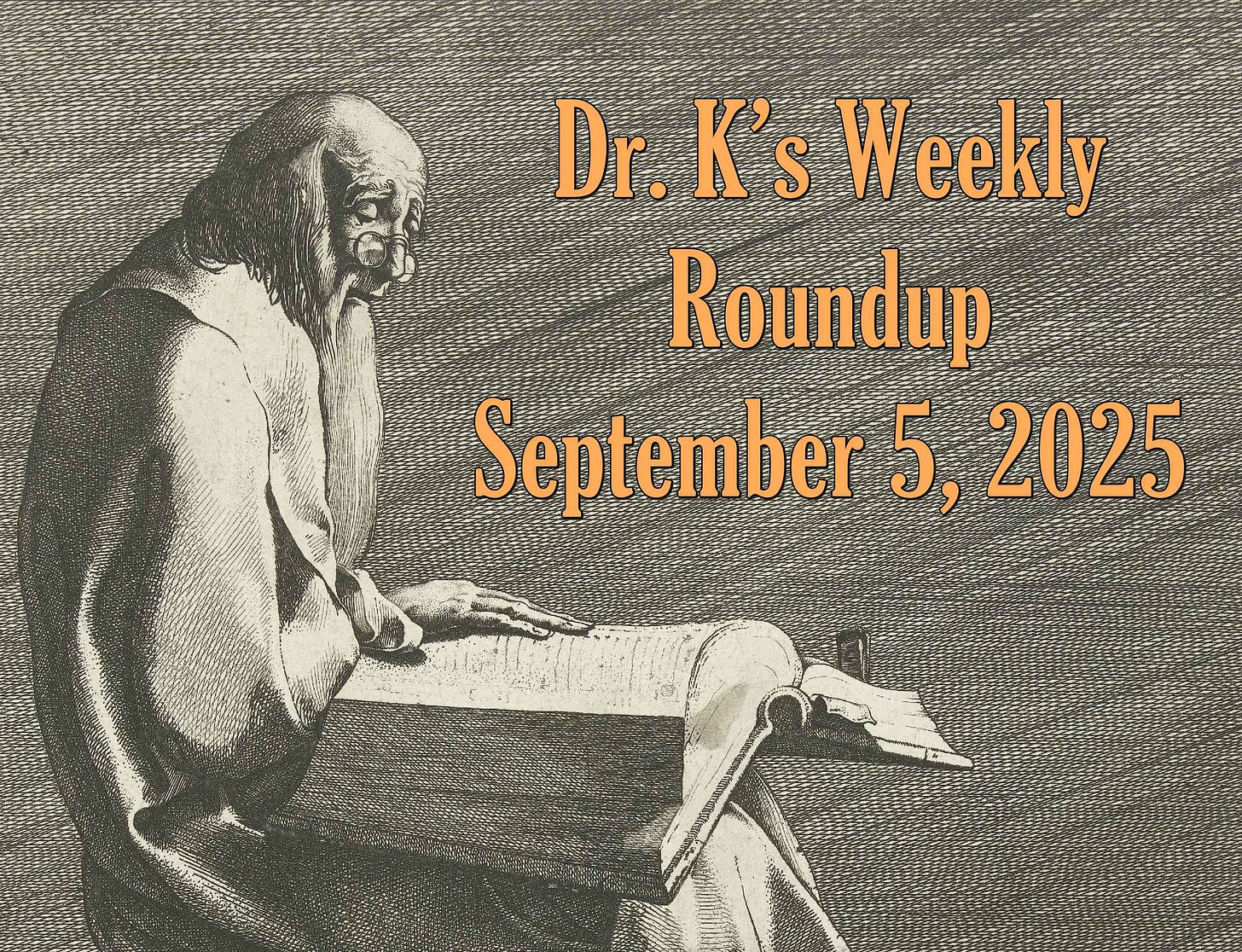
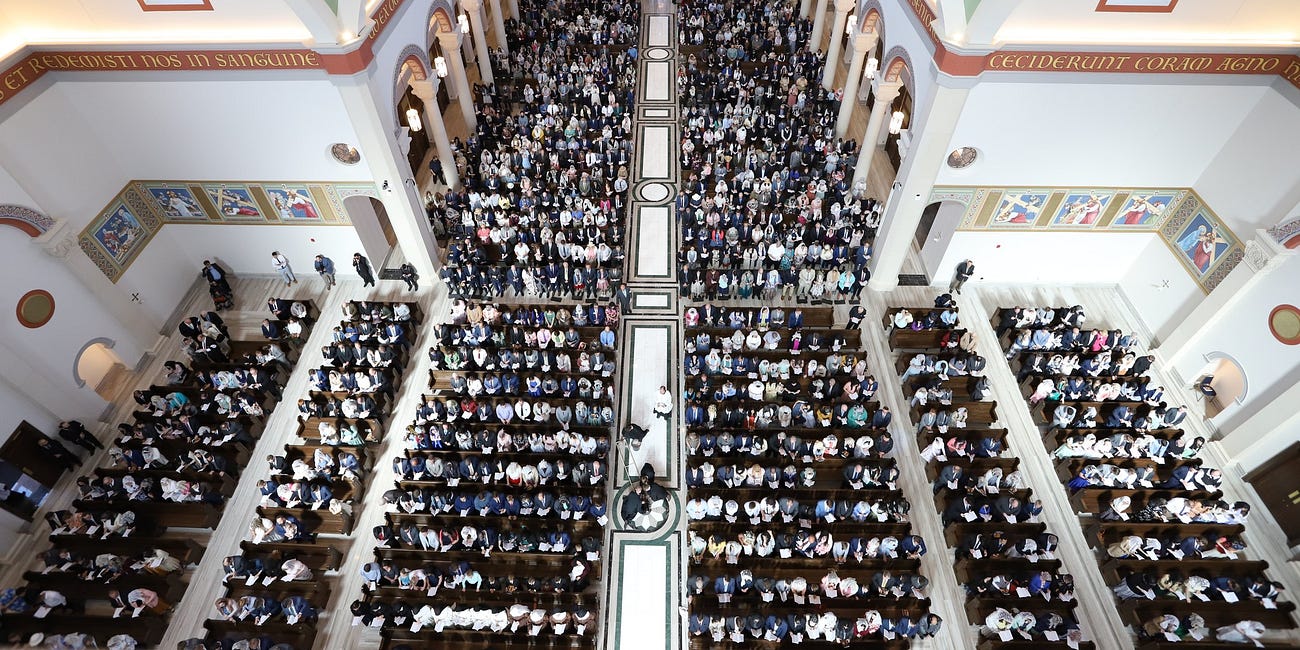

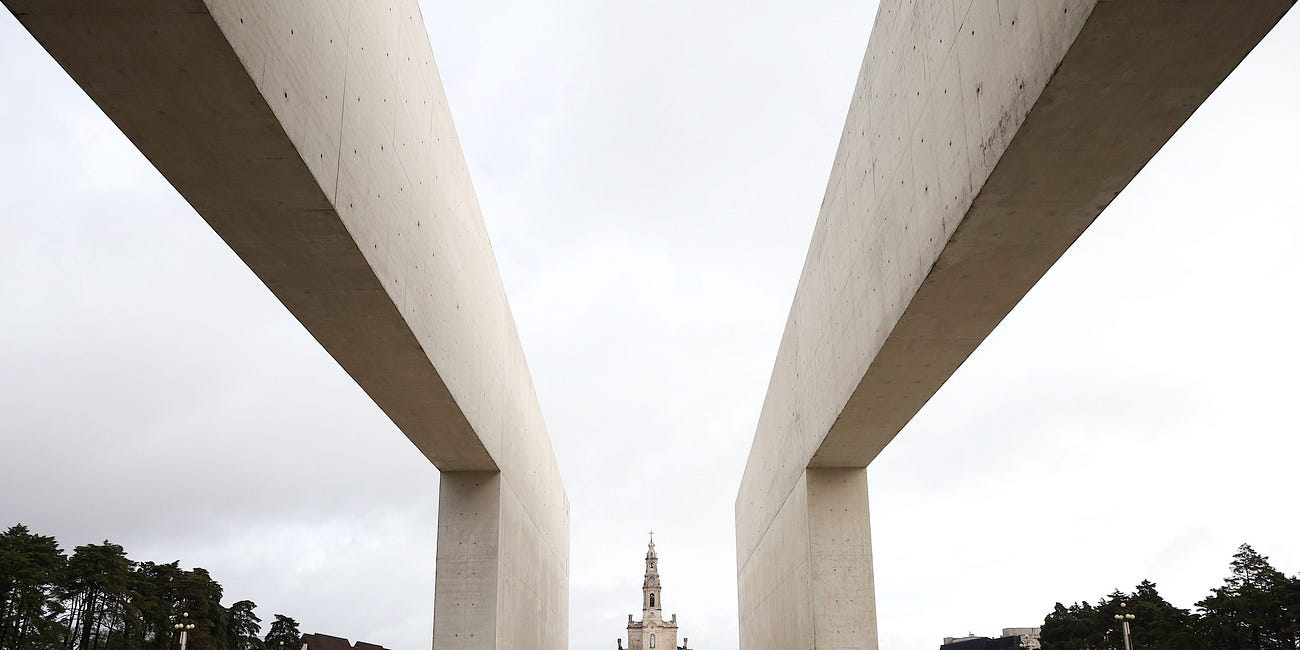
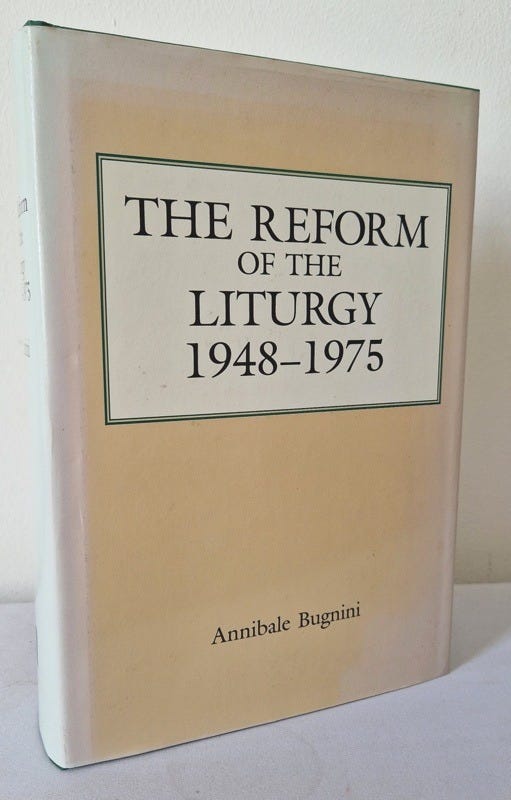

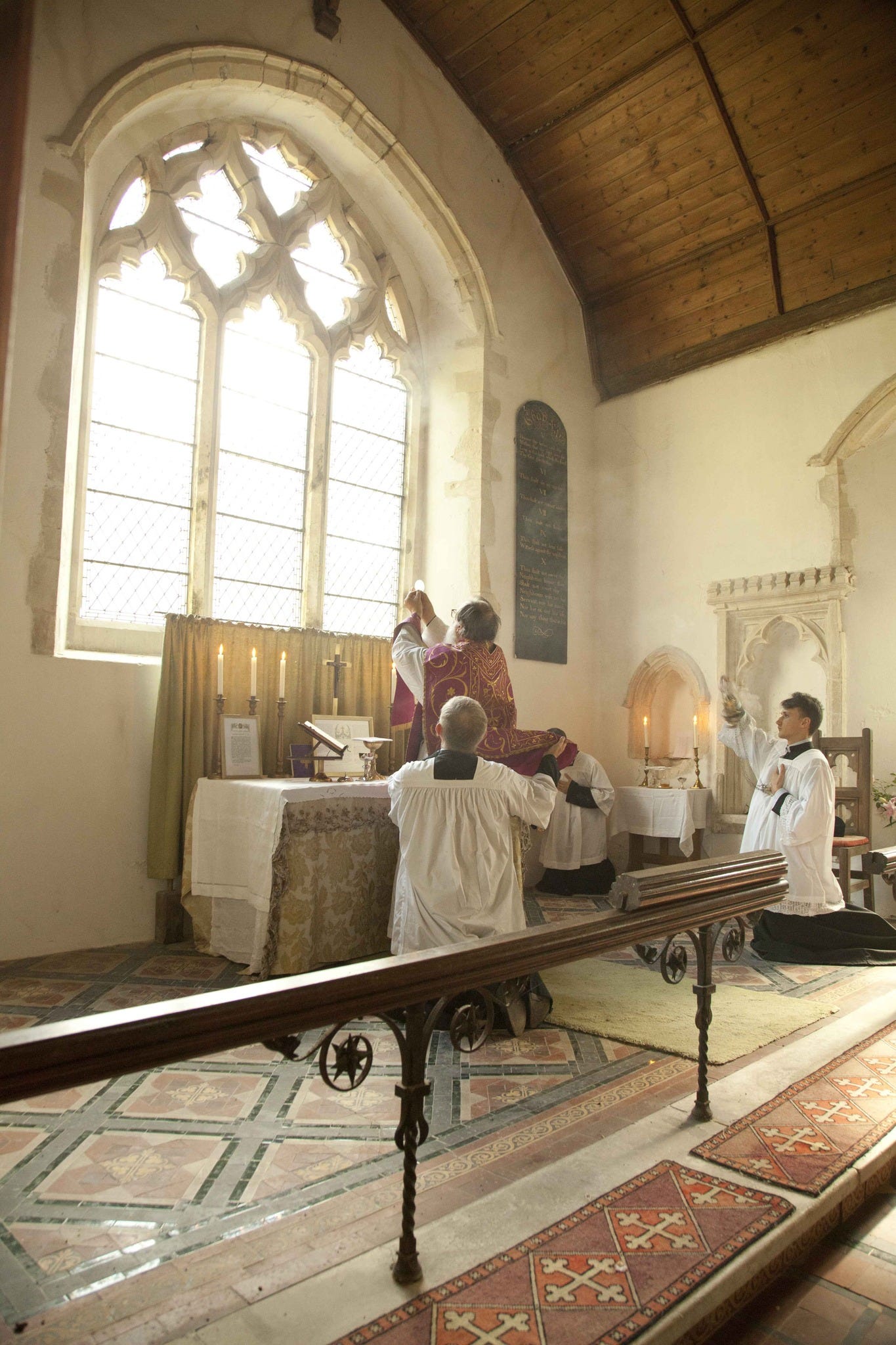



I've begun adding the following tag to the end of my articles: "Human work product, not AI generated."
I am very pro-SSPX, but I am slightly confused on one aspect. I once heard someone say that SSPX weddings are not valid unless they are in union with the bishop. Since the Society comes into dioceses without the bishop's permission, I suppose it is safe to assume that they do not generally ask permission to officiate weddings. Would that mean their weddings are invalid? I know of a lot of good Catholics who attend Mass with, and support, the SSPX. I don't believe they would promote anything that is wrong, which is why I've been troubled by this for a long time.